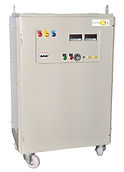Description
Rectifiers are essential components in countless electronic devices, playing a crucial role in converting alternating current (AC) power from the mains supply into direct current (DC) power, which is required by most electronic circuits. Our range of rectifiers offers diverse solutions for various applications, ensuring reliable and efficient power conversion.
Understanding Rectifiers:
Rectifiers achieve this conversion using semiconductor diodes, which allow current to flow in only one direction. This unidirectional current flow transforms the oscillating AC waveform into a pulsating DC waveform. Depending on the rectifier type, further circuitry may be included to smooth out these pulsations and provide a more stable DC output.
Types of Rectifiers:
We offer a variety of rectifiers to suit different needs and applications:
- Half-Wave Rectifiers: These are the simplest type, using a single diode to conduct current during only half of the AC cycle. They are inexpensive but inefficient and produce significant ripple voltage. Ideal for low-power applications where efficiency is not a primary concern.
- Full-Wave Rectifiers: These use either two diodes (center-tapped transformer) or four diodes (bridge rectifier) to utilize both halves of the AC cycle. They offer significantly improved efficiency and reduced ripple compared to half-wave rectifiers. Commonly used in a wide range of applications.
- Bridge Rectifiers: These are the most common type of full-wave rectifier, utilizing four diodes arranged in a bridge configuration. They are compact, efficient, and don't require a center-tapped transformer, making them versatile and cost-effective.
- Controlled Rectifiers: These use thyristors (like SCRs) to control the output voltage and current. They allow for precise regulation of the DC output and are employed in applications requiring variable DC power supply.
Key Features and Specifications (Varied by Model):
- Output Voltage: Ranges from a few volts to hundreds of volts depending on the model and application.
- Output Current: Varies depending on the model, ranging from milliamps to several amperes.
- Input Voltage: Accommodates various AC input voltages, typically specified for the device.
- Ripple Voltage: Indicates the fluctuation in the DC output voltage, lower values indicating a smoother DC output.
- Efficiency: A measure of how effectively the rectifier converts AC to DC; higher efficiency reduces power loss.
- Package Type: Available in various packages, including through-hole, surface mount (SMD), and others.
- Operating Temperature: Specifies the range of temperatures within which the rectifier can operate reliably.
Applications:
Rectifiers are crucial components in a wide variety of electronic devices and systems, including:
- Power Supplies: For computers, mobile devices, and various consumer electronics.
- Battery Chargers: For charging various types of batteries.
- Inverters: Used to convert DC to AC.
- Industrial Control Systems: In various automation and process control applications.
- Audio Equipment: Used in amplifiers and other audio devices.
Choosing the Right Rectifier:
Selecting the appropriate rectifier requires considering several factors:
- Required Output Voltage and Current: Determine the DC voltage and current needed by the application.
- Input Voltage: Ensure compatibility with the available AC input voltage.
- Ripple Voltage Requirements: Consider the sensitivity of the load to ripple voltage.
- Efficiency Requirements: Choose a high-efficiency rectifier for power-sensitive applications.
- Physical Size and Mounting: Select a rectifier with an appropriate package type and size.
